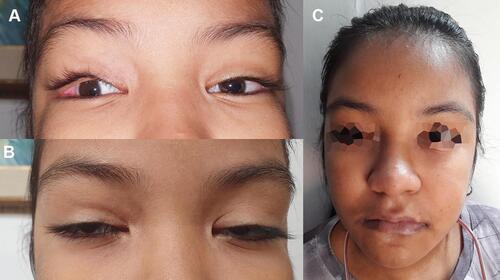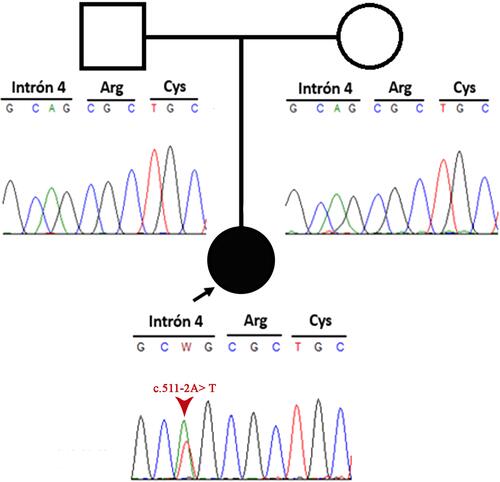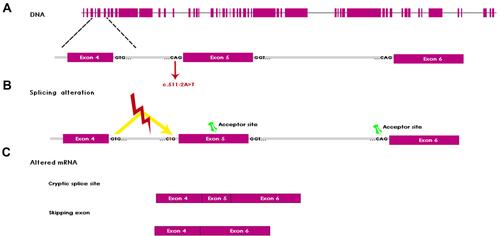Figures & data
Table 1 Clinical Characteristics Found in Our Patient and Literature
Table 2 Splice-Site Variants
Figure 1 Facial characteristics. (A) Image of the patient where microphthalmia and eversion of the lateral third of the eyelid are observed. (B) Image of the patient with arched eyebrows, long palpebral fissures and wide nasal bridge, facial characteristics of kabuki syndrome. (C) Patient’s whole face image shows the dysmorphic characteristics previously described.

Figure 2 Pedigree information of the patient and Sanger sequencing electropherogram of both patient and her parents. The image shows a de novo mutation.

Figure 3 Alteration of splicing mechanism. (A) Schematic of the KMT2D genomic locus and variant c.511–2A>T. (B) Shows the splicing alteration, which represent a mis-splicing of KMT2D by mutation at the intron 4 resulting in the activation of alternative splice sites (green pin). (C) Shows the alteration of mRNA. The activation of cryptic splicing site in exon 5 results in an incomplete inclusion of this exon in the mRNA. Recognition of wild-type acceptor site of exon 6 results in a complete exclusion of exon 5 in the mRNA.

